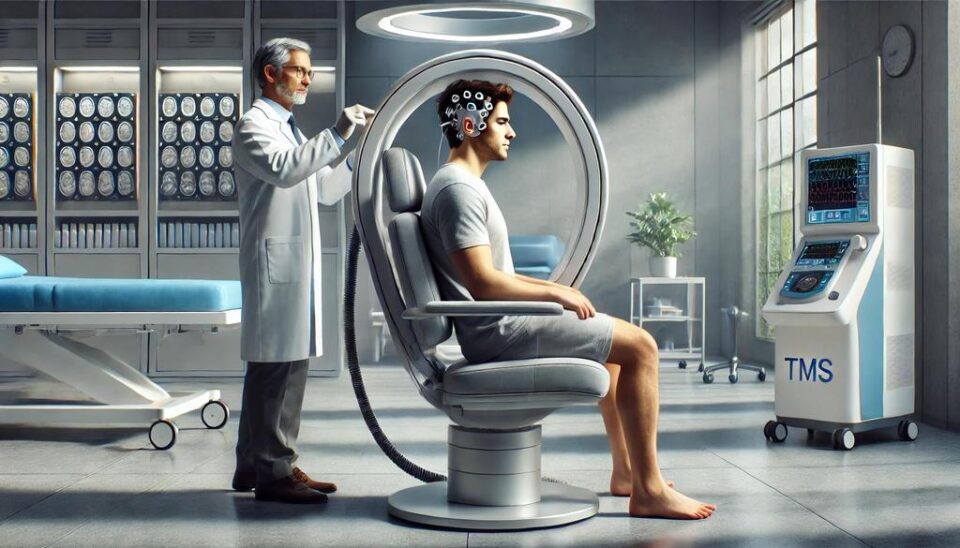Steps to Maximize the Benefits of TMS Therapy

Steps to Maximize the Benefits of TMS Therapy
Are you seeking a breakthrough in mental health treatment? TMS therapy may be the solution you’ve been looking for. This innovative approach harnesses magnetic fields to stimulate nerve cells in the brain, offering hope where traditional therapies might fall short. Whether you’re battling depression, anxiety, or other mood disorders, understanding how to maximize the benefits of TMS therapy can lead you on the path to recovery and well-being. Let’s dive into what TMS is all about and explore how it can transform your life for the better!
What is TMS Therapy?
TMS therapy, or Transcranial Magnetic Stimulation, is a non-invasive treatment designed to alleviate symptoms of mental health disorders. It uses magnetic fields to stimulate specific areas of the brain associated with mood regulation.
During a session, an electromagnetic coil is placed on your scalp. This coil delivers short pulses that activate nerve cells in targeted regions. The process typically lasts about 30 to 40 minutes and does not require anesthesia.
Unlike traditional therapies, TMS does not involve medication. Many patients report minimal side effects compared to pharmaceuticals. It’s an exciting option for those who may have exhausted other treatments without success.
While primarily used for depression, research continues into its effectiveness for anxiety and PTSD. Understanding this innovative therapy opens doors to new possibilities in mental health care that can change lives dramatically.
The Benefits of TMS Therapy
TMS therapy, or Transcranial Magnetic Stimulation, offers a range of benefits that can significantly enhance mental health. This non-invasive treatment primarily targets depression and anxiety disorders by stimulating specific areas of the brain.
One notable advantage is its ability to reduce symptoms when traditional therapies fall short. Many patients report substantial relief from chronic depression after completing TMS sessions.
Additionally, TMS therapy has minimal side effects compared to medication. Patients often experience fewer complications while achieving similar if not better results in mood stabilization.
Another benefit lies in its quick treatment sessions. Each session lasts about 20-40 minutes, allowing individuals to fit it conveniently into their schedules without lengthy hospital visits.
Moreover, some studies suggest long-lasting effects even after treatment concludes. This means people could enjoy sustained improvements in their well-being over time, making TMS an appealing option for many seeking psychological relief.
Who Can Benefit From TMS Therapy?
TMS therapy can be a game-changer for many individuals struggling with mental health issues. Those diagnosed with major depressive disorder, especially when traditional treatments haven’t worked, often find hope in this non-invasive option.
Anxiety disorders also stand to gain from TMS. This therapy helps reduce symptoms and improve overall quality of life for those who feel trapped by their anxiety.
People experiencing PTSD (Post-Traumatic Stress Disorder) may discover significant relief through TMS as it targets specific brain areas involved in emotional regulation.
Moreover, those dealing with obsessive-compulsive disorder (OCD) have reported positive outcomes after undergoing TMS sessions. The unique approach focuses on changing neural pathways that contribute to intrusive thoughts and compulsions.
Even individuals looking to enhance cognitive function or focus—such as students or professionals under stress—might consider exploring the benefits of TMS therapy. It offers a promising avenue toward improved mental resilience and clarity.
Steps to Prepare for TMS Therapy
Preparing for TMS therapy involves several important steps to ensure you get the most out of your sessions. First, consult with a qualified healthcare provider to discuss your treatment plan and any questions you may have.
Next, familiarize yourself with the procedure. Understanding what happens during each session can help reduce anxiety. Knowing that it’s non-invasive and typically painless is reassuring.
It’s also wise to review your current medications. Some might need adjustments prior to starting treatment. Your doctor will guide you on this aspect.
Consider taking some time off work or arranging for someone to accompany you initially. This support can ease any stress related to attending appointments.
Be open-minded about the process itself. Embrace the journey as part of your healing path, setting realistic expectations for improvements over time.
During and After TMS Therapy: What to Expect
During TMS therapy, you’ll sit comfortably in a chair while the device targets specific areas of your brain. You might hear clicking sounds and feel mild sensations on your scalp. Many people find the experience surprisingly relaxing.
Each session lasts about 20 to 40 minutes, and there’s no downtime afterward. You can return to your daily activities right away. Some individuals report feeling slightly lightheaded or fatigued initially, but these effects typically fade quickly.
After completing several sessions, changes may start to manifest in mood and overall well-being. It’s essential to keep an open line of communication with your therapist during this period. Sharing any feelings or concerns allows for adjustments tailored to your unique needs.
Celebrating small victories along the way can enhance motivation as you navigate through TMS therapy’s journey toward improved mental health.
Tips for Maximizing the Benefits of TMS Therapy
To get the most out of TMS therapy, establish a consistent routine. Attend all scheduled sessions to maintain momentum and build on the benefits over time.
Engage actively in your treatment plan. Communicate openly with your therapist about any concerns or feelings throughout the process. This feedback can enhance your experience.
Incorporate self-care practices into your daily life. Regular exercise, balanced nutrition, and adequate sleep play crucial roles in mental health and can amplify the positive effects of TMS.
Consider keeping a journal during therapy. Documenting thoughts and emotions helps track progress and identify patterns that may emerge as you undergo treatment.
Connect with support groups or peers who have undergone similar experiences. Sharing insights and encouragement fosters an environment conducive to healing while reinforcing the benefits of TMS therapy.
Conclusion
TMS therapy offers a promising path for those seeking relief from depression and other mental health conditions. Understanding the benefits of TMS therapy can empower individuals to make informed decisions about their treatment options. By taking proactive steps in preparation, engaging fully during sessions, and incorporating supportive practices afterward, patients can enhance their overall experience and outcomes.
As with any therapeutic intervention, commitment plays a crucial role in achieving desired results. Embracing lifestyle changes that support mental health, maintaining open communication with healthcare providers, and staying informed about ongoing developments in TMS technology will ensure you are maximizing your investment in this innovative treatment.
With the right mindset and approach, TMS therapy has the potential to transform lives—opening doors to brighter days ahead. Taking these steps can lead not only to an improvement in symptoms but also to a renewed sense of hope and well-being.








